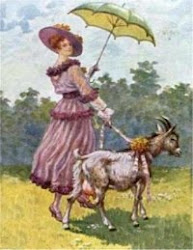
Lemon curd is a refreshing change of taste on homemade crumpets with a steaming cup of hearty breakfast tea. I can't wait for the next crop of Meyer lemons to satisfy my craving, so I whipped up a batch using a traditional canning method. This method calls for bottled lemon juice, which isn't my first preference, but it does eliminate the fluctuations in acidity levels, making it more desireable for cooking up a larger batch and canning. While a fresh lemon curd has a refrigerated shelf life of 4 weeks, canned lemon curd (without any preservatives) is good for 4 months unopened plus another 4 weeks in the refrigerator after opening.
Ball canning jars are always my first choice, but with some items that I want to give as gifts, I use commercial jars for that professional look. I've been buying from SKS Bottle & Packaging for years. Excellent prices, service and delivery times.
Ingredients:
 High quality ingredients make all the difference with this recipe. Farm-fresh eggs enhance the flavor and color, but store-bought brown eggs are a good second choice. Stick with Domino sugar and name brand lemon juice and unsalted butter.
High quality ingredients make all the difference with this recipe. Farm-fresh eggs enhance the flavor and color, but store-bought brown eggs are a good second choice. Stick with Domino sugar and name brand lemon juice and unsalted butter. ~2-1/2 cups sugar
~1 cup bottled lemon juice
~3/4 cup unsalted butter, cut into 1/2" pieces
~7 large egg yolks
~4 large whole eggs
Equipment:
 I would normally use a double boiler for a delicate egg concoction, but my Maslin marmalade pan does an excellent job. Even though this recipe calls for constant stirring and whisking, I never have to worry about burning or uneven distribution.
I would normally use a double boiler for a delicate egg concoction, but my Maslin marmalade pan does an excellent job. Even though this recipe calls for constant stirring and whisking, I never have to worry about burning or uneven distribution.
*Unlike most canning recipes, temperature is an issue with this one. Preheat the water bath to 180 degrees, but no hotter before the jars are added. If the water is hotter than this, the total processing time will take much longer than needed.
You will add the filled jars and wait for the timing to begin when the water reaches a full boil over the tops of the jars (approx. 20 mins.). Processing time will then be 15 mins.
Step One:
If you use a double boiler, do not start this Step with the bottom full of hot water. Remove the top pan to a countertop. (This is why I prefer using the Maslin pan.)
Whisk the egg yolks and whole eggs together until completely mixed in one solid color - no striations. Begin adding about a half cup of sugar at a time, blending until smooth before adding another half cup. Lastly, blend in the lemon juice, then add the butter pieces.

Step Two:
A silicone spatula or cooking spoon is recommended for constantly stirring the mixture to 170 degrees, but I prefer using a whisk with a gentle touch. This step is going to take about 10 mins., but don't be tempted to get distracted or leave it unattended. Stirring constantly means stirring constantly. As soon as the thermometer reaches 170, remove the top pan of the boiler to the countertop and continue stirring gently until the curd thickens (about 5 mins.).

Step Three:
Water bath is registering 180 degrees...check.
Canning jars sterilized in water bath...check.
Ladle thickened curd into the jars, secure the lids and tighten, place jars in the water bath...check.

Keep the lid on your water bath pan and start timing the processing when the water reaches a full boil. Process 15 mins. for jars containing 8 oz. or less. This recipe isn't recommended for larger jars.
Yummy, yes! But I can't wait to try this recipe with Meyer lemons. Last year I bought from the wonderful folks at Lemon Ladies Orchard in California. Karen Morss is a multi-talented, delightful woman who shipped my order in perfect condition. It was my first attempt using Meyer lemons and the recipe I chose was a lemon & vanilla bean marmalade. It exceeded my expectations and I plan on making more this year.






